Earlier this summer, the German Aerospace Institute in Braunschweig (DLR) presented the results of its Living Labs. Here, experts could test their 5G applications in various projects for regional and urban development. FUENF-G presents all six e-health projects with their respective goals and results in this listicle.
Author: Shristi Mangal Pal
Even before the industry got to grips with 5G, several research institutes were already intensively working on the subject. From RWTH Aachen University to the Fraunhofer Society, from Hamburg to eastern Bavaria, universities, cutting-edge companies, and institutions have invested hundreds of hours in research projects. Their aim has been to identify the applications in which the use of 5G will increase productivity and performance.
More digitization needed in healthcare
According to DLR, the medical industry is one of the least digitized sectors in Germany. In the course of demographic change, it now becomes necessary to ensure high-quality patient care for the future in rural areas as well. This is why the organizers of the Living Lab deem it necessary to digitize processes and establish corresponding infrastructures in the healthcare sector. As can be seen in the following use cases, 5G could indeed be a driver here.
5G Living Lab in the Mobility Region Braunschweig-Wolfsburg
One such research project is the 5G Living Lab. It is funded by the German government to examine the applications of 5G technology in both rural regions and cities. Under the auspices of the Federal Ministry of Transport and Digital Infrastructure (BMDV), the project aims to open up Germany as a market for 5G applications.
Picture gallery showing the results of DLR’s Living Lab. (Copyright: DLR)
Set-up of the 5G Living Lab
In DLR’s case, the Living Lab consists of two modules or regions, Braunschweig and Wolfsburg. In Braunschweig, the focus is on research and transformation, whereas in Wolfsburg on application and operation. A total of twelve subprojects are being tested in the areas of mobility, e-health, and smart construction. The results will be integrated into existing platforms such as the Application Platform for Intelligent Mobility (AIM), Testfeld Niedersachsen, or #WolfsburgDigital to facilitate scalability and implementation in practice.
E-Health & 5G Use-Cases
Let’s have a closer look at the individual application areas. To date, research shows that 5G technology in the healthcare industry enables faster and more reliable data transmission. This, in turn, facilitates telemedicine and remote patient monitoring. Doctors and medical staff can thus access important information in real-time, which could improve patient care and diagnosis. As such, this listicle addresses the 5G applications in e-health that were presented at the 5G Living Lab poster presentation.
1. 5G-Telerettung
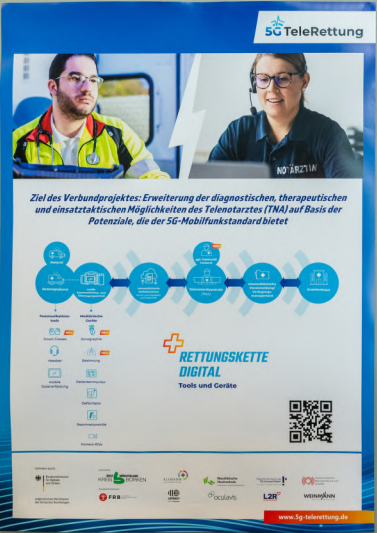
Currently, this consultation is carried out via a transmission unit that uses the LTE mobile radio standard. (Image DLR, Timm Bourry)
The aim of the joint project is to significantly expand the possibilities for diagnostics and, if necessary, therapy as part of the range of applications of the tele-emergency physician (TNA). This will be based on the potential offered by the 5G mobile communications standard.
Owing to demographic changes, the specialization of hospitals, and the loss of emergency physicians in certain areas, preclinical emergency care has come under increasing pressure. Thanks to the tele-emergency doctor system introduced in the Borken district in 2021, emergency services on the ground can therefore coordinate directly with an emergency doctor via an LTE transmission unit. This system is to be expanded to include the integration of medical devices for ventilation and resuscitation, as well as the guidance of rescue workers via smart glasses.
This project will test the technology in a dual-development environment. The latter consists of a 5G campus network and a Living Lab at the Westphalian University of Applied Sciences in Bocholt. The campus network is the first of its kind in the Westmünsterland region and is to be made available in the future for other research projects, for example from the regional economy.
You can find more information about the project here.
2. Smart Forest 5G Clinics
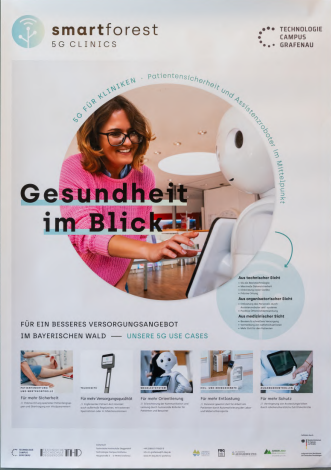
In an emergency, the responsible nursing staff should be notified immediately. (Image DLR, Timm Bourry)
This project tested the capabilities and current limitations of fifth-generation mobile communications in hospitals.
Healthcare needs more support for routine, time-intensive and critical processes. After all, this ensures patient safety and protects staff from overwork and infection risks.
The introduction of the 5G mobile communications standard opens up new solution possibilities at this point, which could benefit the entire population in the affected counties through a sustainable improvement in healthcare.
To this end, one hospital each from the Viechtach district was equipped with 5G technology: the Arberlandklinik Viechtach and the Klinik am Goldenen Steig Freyung. Here, the team adapted the use cases to test the transferability of the results.
Read more about the methods and results of the project here.
3. Rettungsnetz 5G
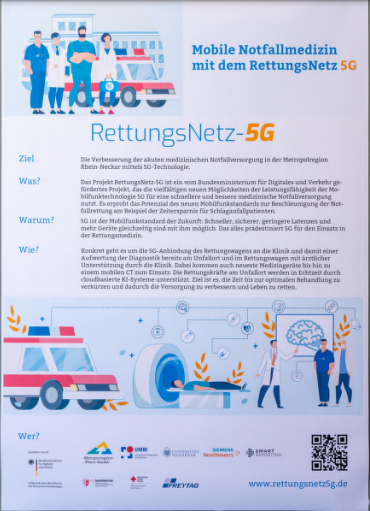
From phase 1 to 3, the whole thing should take 2-3 hours. (Image DLR, Timm Bourry)
The “Rescue Network 5G” project is designed to tap the potential and gradually deploy the new mobile communications standard and several associated technologies. Together, they are intended to enable mobile diagnostics and a much faster emergency therapy start.
Phase 1: At the outset, the team set up a 5G-based mobile video and data unit for early stroke diagnosis in rescue transport. Specialists from a destination hospital could be informed and called in, and an AI-based platform would process the data to speed up the patient’s onward care and increase the chances of survival.
Phase 2: A mobile cranial CT was then installed in an ambulance to speed up the diagnosis and initiation of therapy for strokes. With the help of 5G, CT data could be transmitted and analyzed in real-time so that therapy could begin at the scene, saving vital time.
Phase 3: In the final phase, the possibility of using remotely controlled 5G interventional robots was investigated. They offer particular potential for the treatment of emergencies such as acute strokes.
For more information about the project, please click here.
4. Automation and robotics

5G applications in healthcare must meet fundamental requirements such as reliability, availability, and security for high-speed, high-volume data transmission. (Image DLR, Timm Bourry)
The aim of the “5G-4-Healthcare” project is to advance healthcare with the help of 5G technology. This was achieved through selected use cases and focus areas (healthcare logistics, integrated care, etc.).
The core of this project is an intensive examination of the potential of automation and robotics in healthcare. It investigates the use cases in which the greatest economic effects can be achieved and caregivers can be relieved.
A modular method set allowed the project goals of 5G-4-Healthcare to be realized and distributed among the work packages in the course of the project. In addition to the overall project management, subprojects were set for the testbed at the Health and Medical Technology Campus of the OTH Amberg-Weiden. The same was set up for the Living Lab at the Weiden Hospital and for the Mobile Living Lab.
For more information about the project, please click here.
5. Rettungskette 5G

By connecting to emergency room software, patient flows can be managed in real-time and directed to the most appropriate hospital. (Image DLR, Timm Bourry)
In the “Rescue Chain 5G” project, technologies such as augmented reality, cloud computing, artificial intelligence, and mobile robotics for emergency care are being developed, and tested. Besides, their feasibility has also been demonstrated under real conditions.
The project aims to network and investigate emergency care through the use of the 5G mobile communications standard. It stands out due to the cross-regional transferability of the solutions and the holistic view of the rescue chain.
Technological limitations of 4G mobile communications have been identified, and measures such as autonomous rescue drones and a device for monitoring cardiac massage are being developed to improve the availability of defibrillators in rural areas and increase the quality of first aid.
For more information about the project, please click here.
6. Rescue Service County-Coesfeld
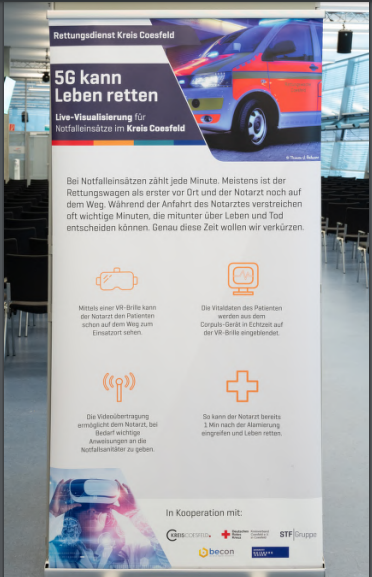
All tests are expected to be completed by the end of 2024. The results will then determine whether 5G technology will be used permanently in rescue services. (Image DLR, Timm Bourry)
The aim of this project is for paramedics to provide the emergency physician in charge with an initial picture of the situation on the way to the scene. This should significantly improve medical assistance.
“Super-fast, the Coesfeld paramedics navigate the Internet with 5G technology. And the district’s ambulance service wants to take advantage of this to improve help in an emergency,” reports Radio Kiepenkerl.
In the future, the emergency physician will use VR glasses to have audio-visual contact with the emergency paramedics who are already on the scene while they are still on their way to a mission. This will enable the doctor to give instructions at an early stage after gaining an initial impression of the patient’s situation.
District Director Dr. Tepe emphasizes, “This is a great opportunity to make good use of increasing digitization in this area as well. In this way, we are contributing to even greater security of care for the population.
At the beginning of next year, the first ambulance at the Coesfeld station and an emergency physician are to be equipped with the new system.
For more information about the project, please click here.
Consortium and timeframe
The consortium consists of the German Aerospace Center (DLR), the Fraunhofer Institute for Integrated Circuits (FHIIS), the Institute for Automation and Communication (ifak), the Physikalisch-Technische Bundesanstalt (PTB), and the Technische Universität Braunschweig (TUBS). With a funding volume of approximately 12 million euros, the project was launched on December 5, 2019, and will run until June 30, 2023.

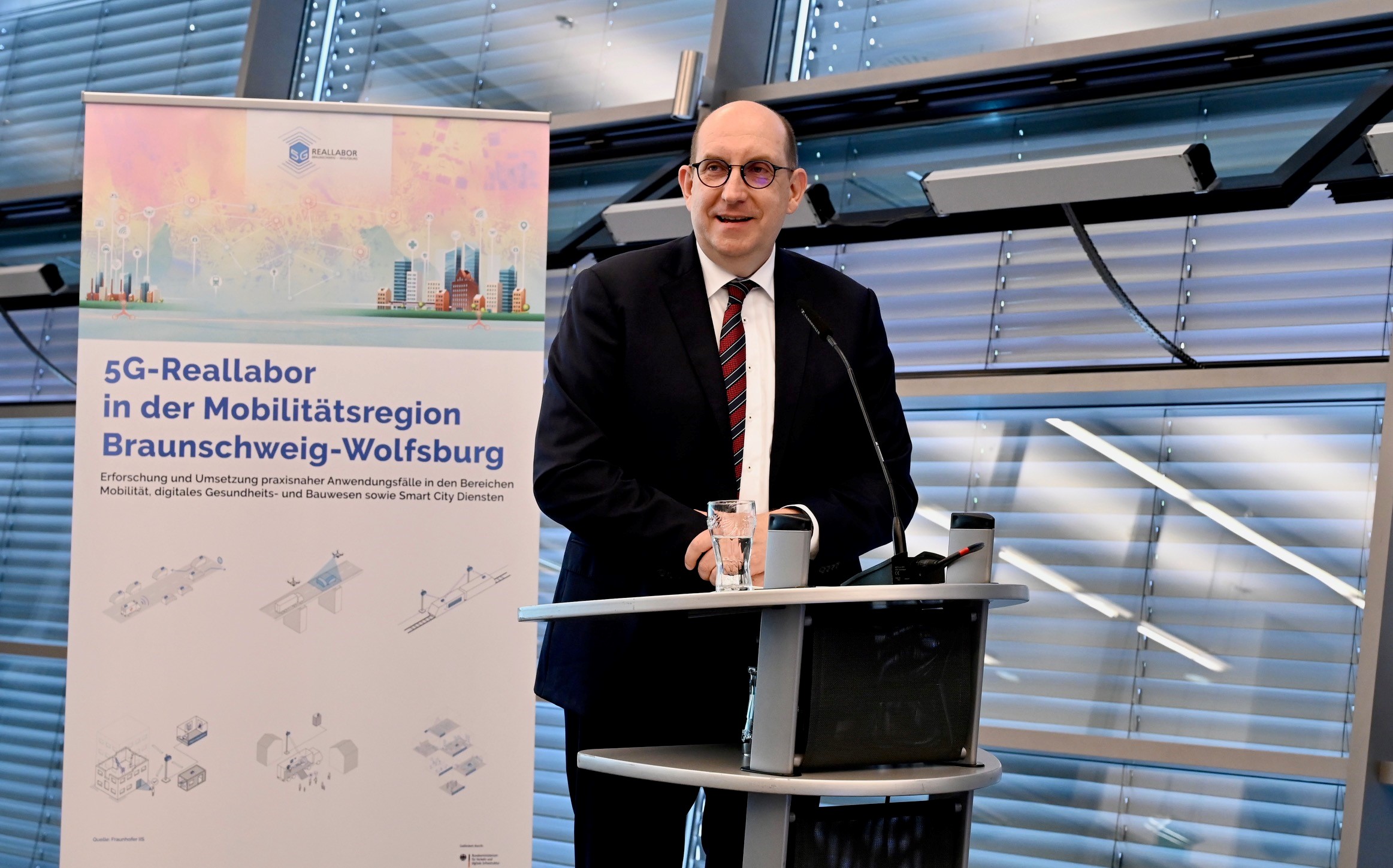
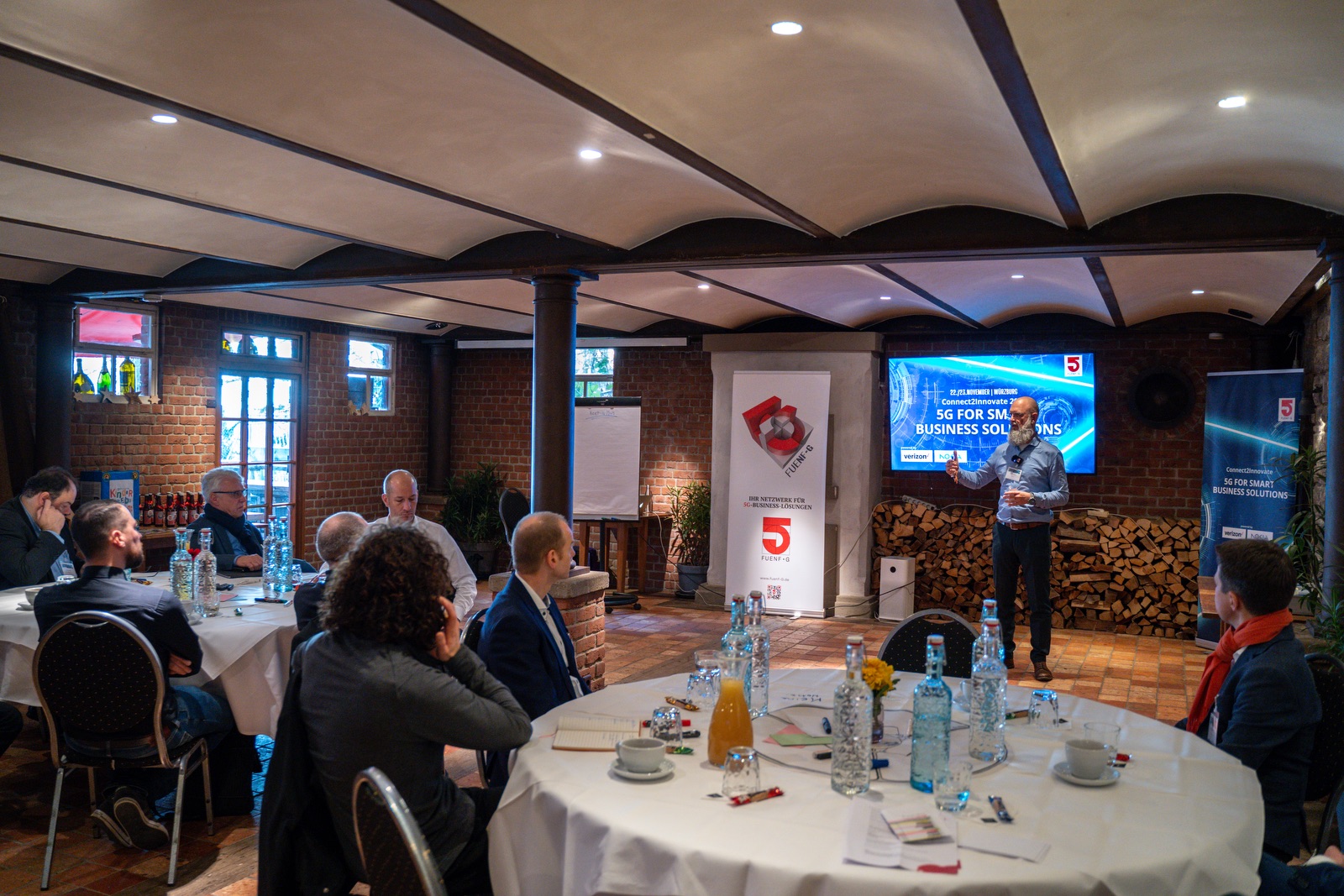
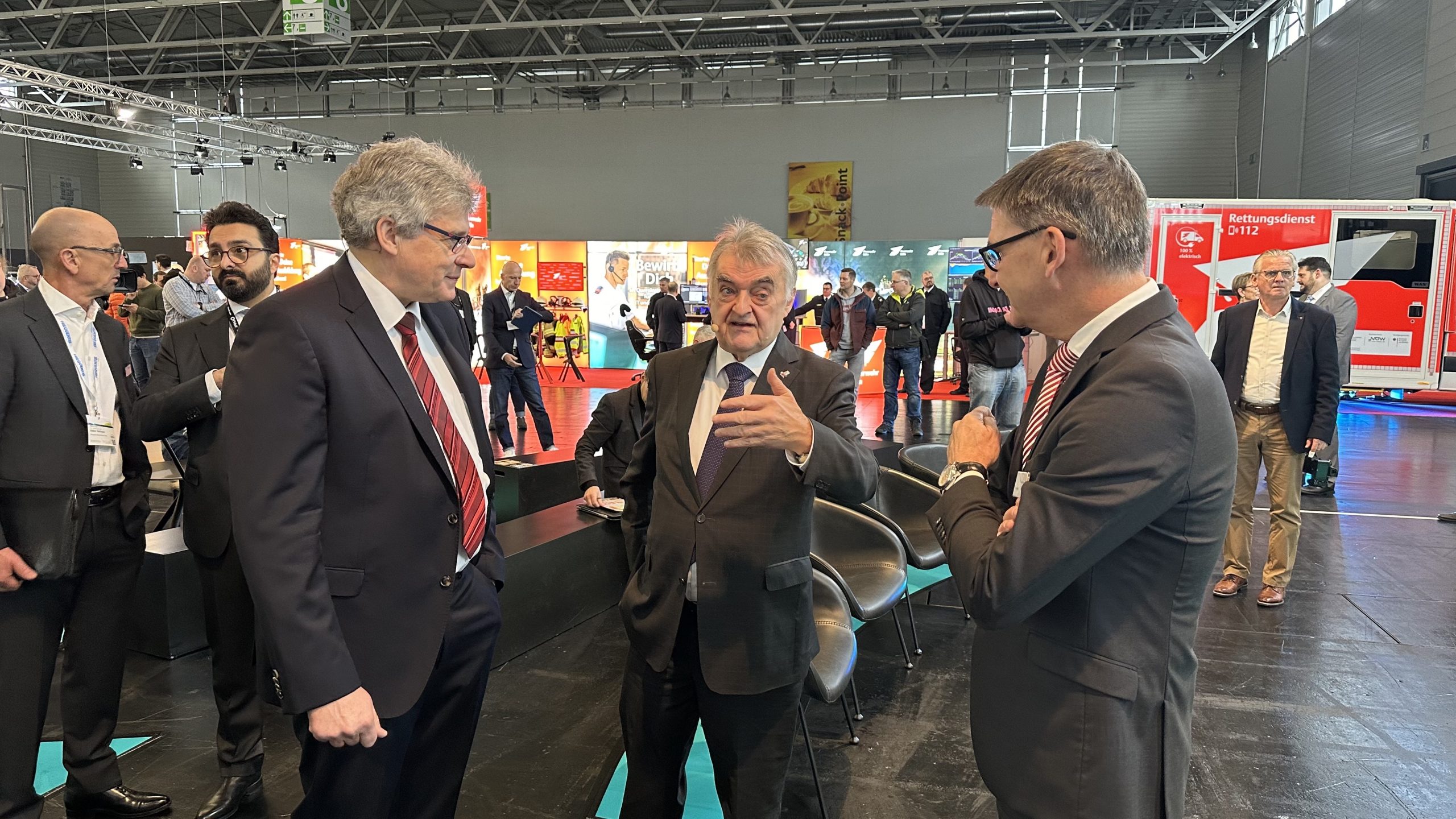

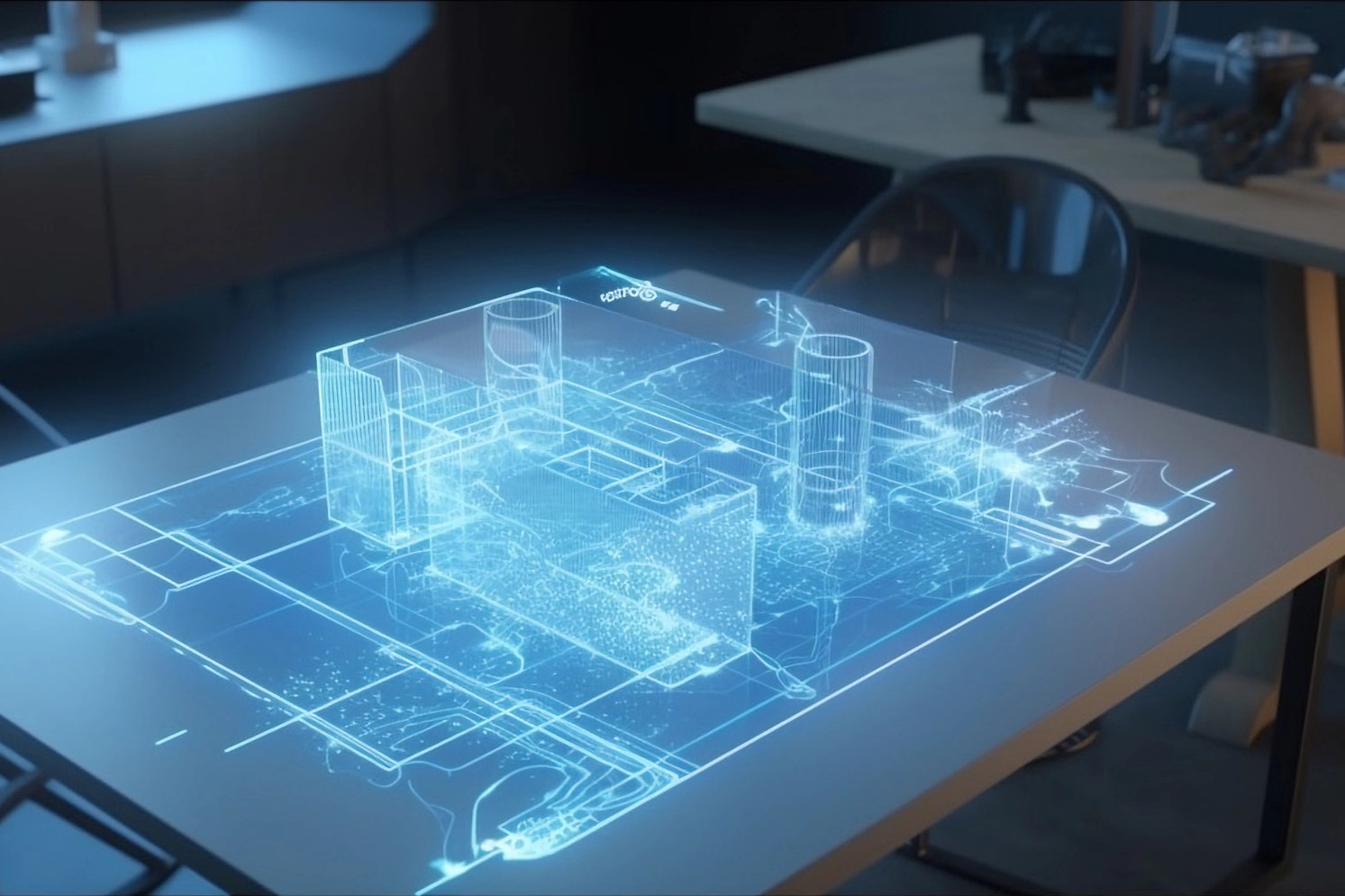



Leave A Comment